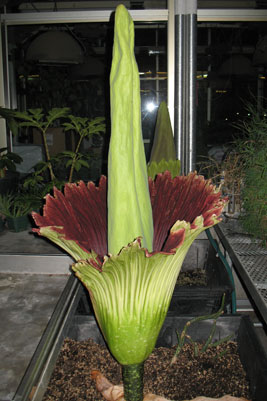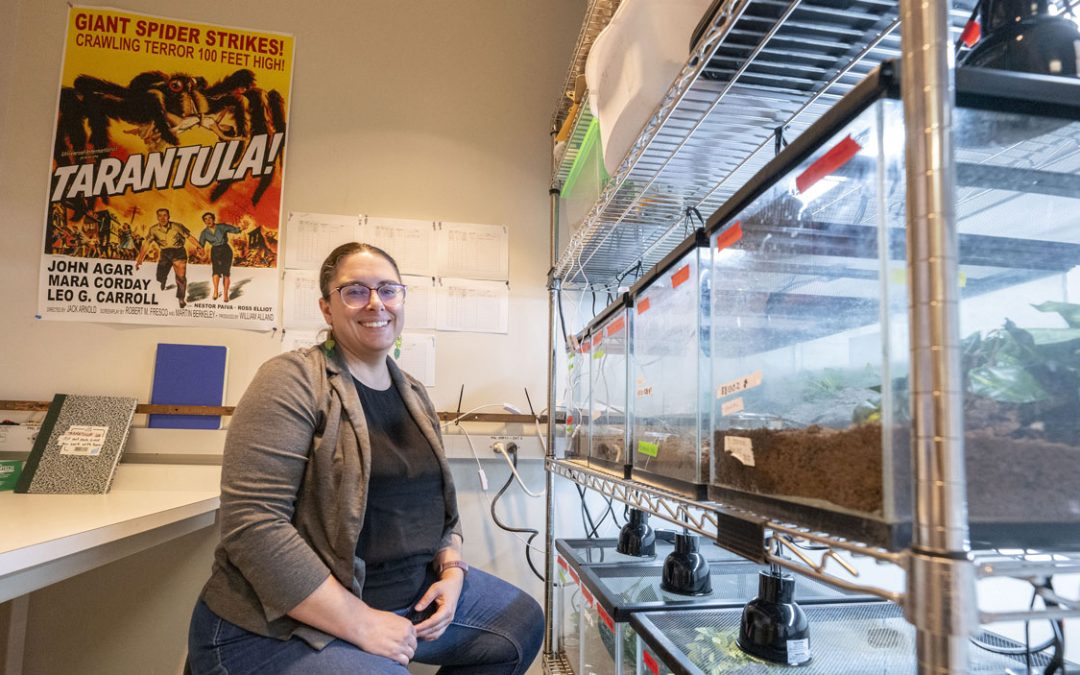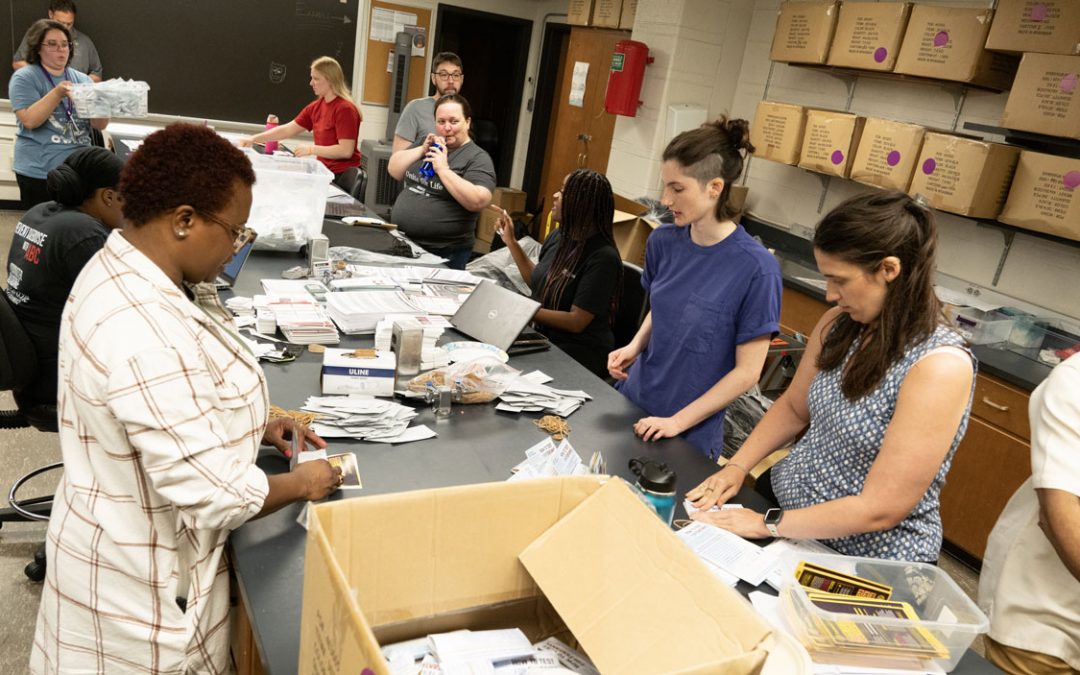It’s stinky. It’s odd looking. And it only blooms once or twice a decade. The ever-interesting corpse flower showed off its elusive bloom at the University of Missouri–St. Louis this weekend. More than 300 people filed into a university greenhouse to see – and smell – the exotic plant during the 12-20 hours it was open.
It’s been two years since a corpse flower last opened at UMSL and eight long years before that. The plant, affectionately called “Archie,” is a titan arum, whose scientific name is Amorphophallus titanium. Archie is actually not a flower at all, but an unbranched inflorescence – the largest in the world. A native of Sumatra, an island in western Indonesia, it is known for the pungent odor – similar to rotting meat – that the “flower” gives off when it opens. The smell is designed to attract carrion beetles that pollinate the plants.
“This plant is unpredictable and fascinating. You never know when it will bloom,” said Kathy Upton, research specialist and greenhouse manager at UMSL. “When it finally happens it’s really exciting. It has so many interesting features – from its odd
shape and stinky odor to its giant size and ability to heat itself up to above room temperature. You don’t want to miss seeing this incredible plant.”
Upton added, “It was fun to watch Archie’s flower progressively open wider throughout the day and into the evening. The odor really increased after the sun went down, and reminded me of cooked cabbage. I’m looking forward to watching our second flower, Betty, and to attempt to create an UMSL hybrid with pollen from Archie.”
Upton has grown the plant for the past 16 years after receiving seeds from Jim Symon, a collector. This particular plant bloomed in 1998, making it the first to bloom in the U.S. since 1939. Archie is the fourth plant to produce a flower from the original seed batch. His sister, Betty, is getting ready to bloom, so it’s not too late to experience the corpse flower.
More information:
umsl.edu/~biology/titan_arum
Twitter:
STLTitanArum















